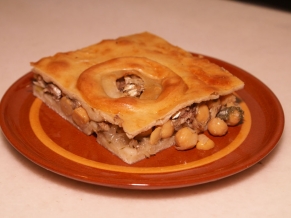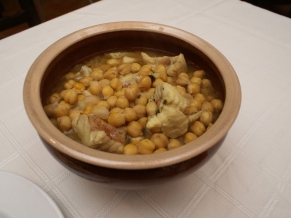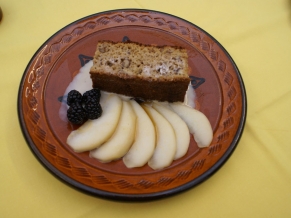Middle Ages cuisine
Influence of the Middle Ages in today’s cuisine
Vimianzo’s medieval cuisine, just like its landscape and traditions, is an exciting combination of flavours, colours, aromas and habits around the table, due to the mix of cultures Vimianzo enjoyed.
The concept of medieval cuisine is the point of reference around which the current guidelines are built. Why is that? Well, the Middle Ages followed the decline of the Roman Empire, at a time when there was a growing interest in gastronomy. The Romans even left manuals and cookbooks that have survived to this day, like that of Apicius, a Roman cuisine innovator, a true Ferran Adriá or Juan Mari Arzak of his times. Combining this legacy with the Arab one, we have medieval cuisine, with dishes based on a single product, elaborate stews, and salads. This medieval influence is the backbone for traditional Galician cuisine.
The habits adopted back then still apply today, like having salad as a starter, or having vegetables as a side dish for meat or fish, instead of the other way around, as it was the habit in the Iron Ages. Stews and soups are usual, but so are dishes consisting of a whole fish, boiled shellfish and foods made from leftovers like meatballs or the typical Galician pie, the empanada.
Fish preserves and reserves
The sea is a constant in Vimianzo’s food, but especially during the Middle Ages, given the Catholic Church’s impositions. During Lent days, meat consumption was banned, so the alternative was fish from the Costa da Morte. The Church’s impositions are a decisive factor, having an impact both on fish consumption, and production in coastal areas and inner regions, leading to the consolidation of conservation techniques, which laid the basis for the imminent canning industry.
If there is anything that characterizes medieval food it is the use of spices and sour sauces. Some historians point out that they were used to hide the taste of sometimes rotten food, because refrigeration systems did not exist yet. That is a reason behind the importance of conservation systems such as drying, salting, smoking and escabechado.
Laxe and Camariñas, the flagship towns of Vimianzo and its suppliers of seafood products, were, through the Middle Ages, an important part of the fish reserves of the whole Spain, exporting sea products to the Mediterranean, England, France... a situation that still remains today.


